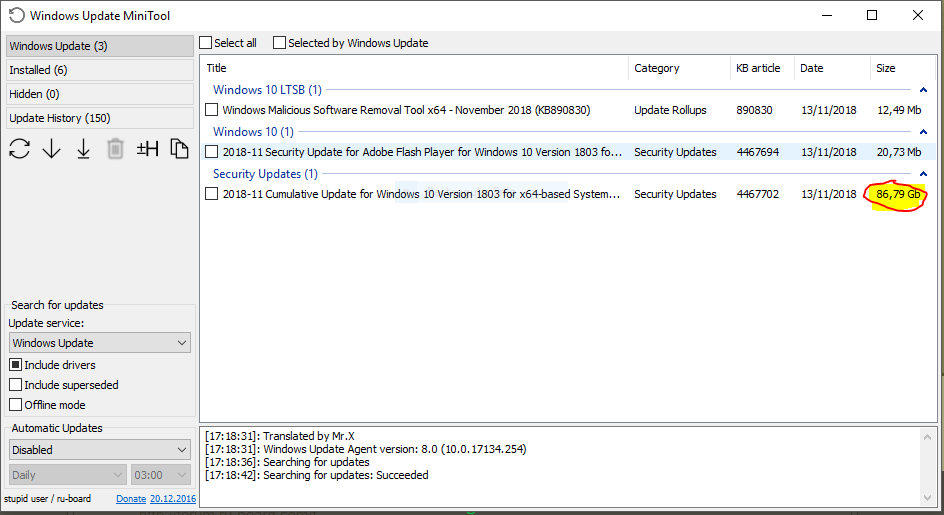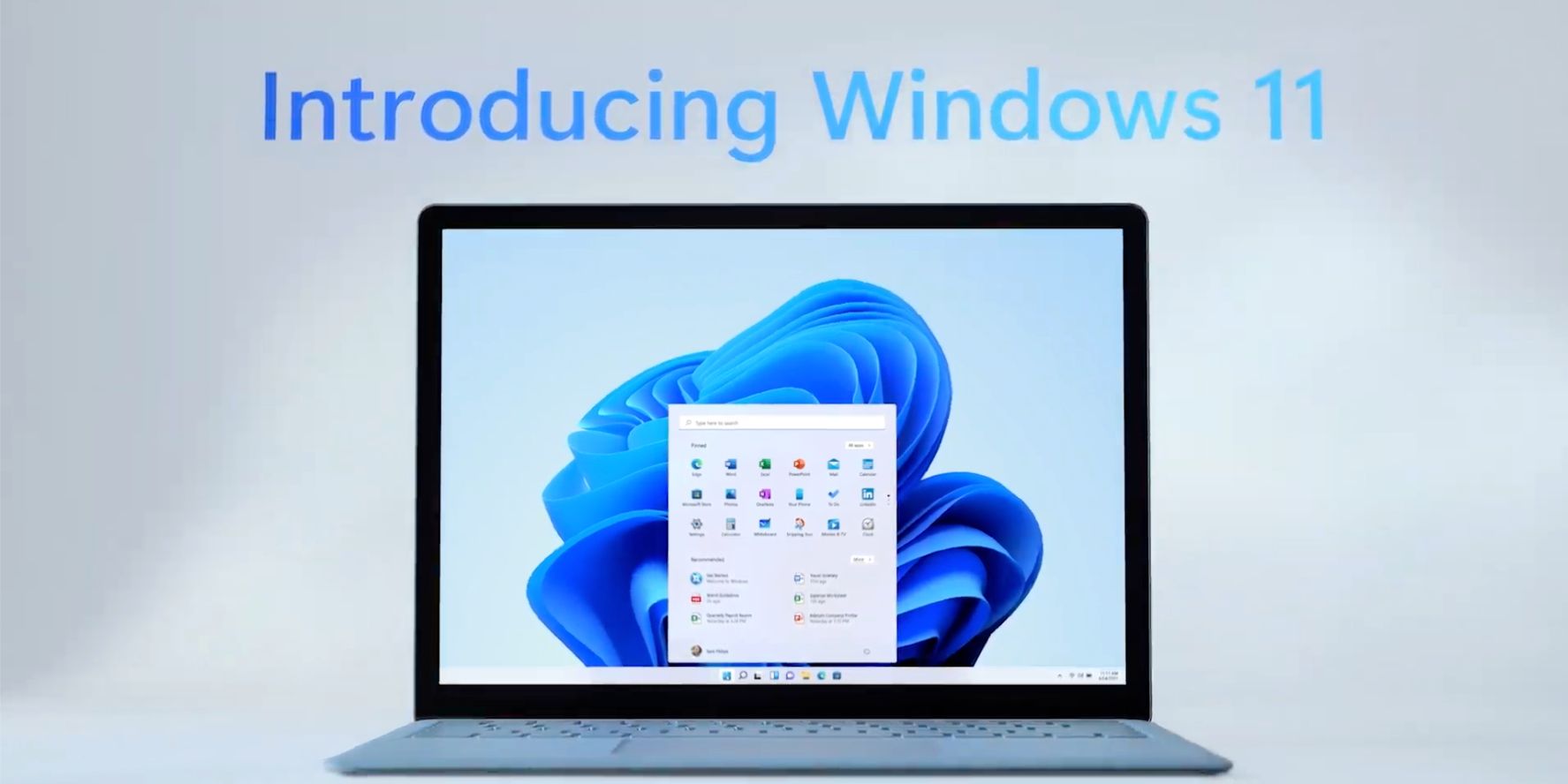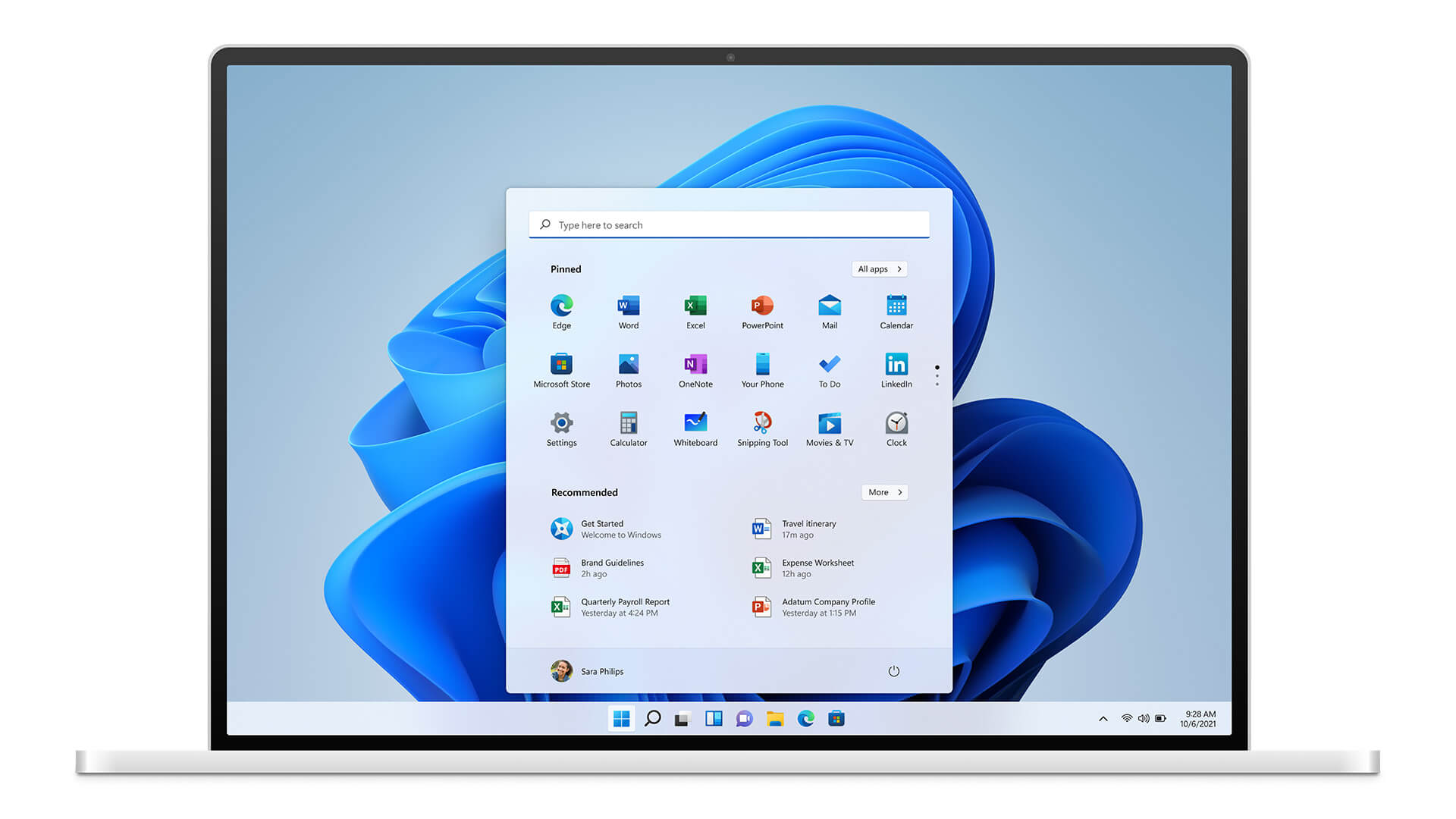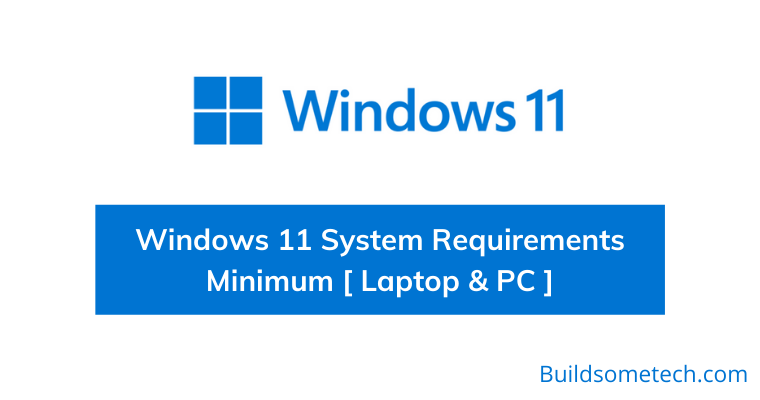TPM, Secure Boot and CPU requirements check and installing Windows 11 on unsupported hardware devices. The tool has been available for a while as an alternative to the official Media Creation Tool to download the ISO file from the Microsoft servers for virtually any version of Windows 10 and Windows 11. You can even proceed with the setup on a device using the legacy BIOS (basic input/output system) firmware instead of UEFI . This is another working way to disable all kind of hardware requirements check by Windows 11 setup and install the operating system on unsupported devices which are missing required chip and features.
According to Microsoft, "Your device might malfunction due to these compatibility or other issues. Once you have more information, follow our guide to installing Windows 11 on an unsupported PC for concrete steps you can take to resolve your issues. For example, on some PCs, you may simply need to enable TPM 2.0 or Secure Boot in the UEFI firmware . If the problem is that your PC has an older CPU or it only has TPM 1.2, there's a registry hack that will let you bypass the hardware requirements and install Windows 11 anyway. A 3rd party software "Rufus" allows users to create Windows 11 bootable USB and disable all hardware requirements check which are performed by Windows 11 setup at installation time.
Start the Windows 11 update software, click "Change how setup downloads updates" and select "not right now", or disconnect from the Internet before pressing "Next". The reason is that there's now a new version of the updater that disables the "back" button on the "Unsupported Hardware" screen. Click "Next", after some checking, a screen "This PC doesn't currently meet Windows 11 system requirements" appears. Navigate to the downloaded Windows 11 ISO file, and select it.
Rufus will populate the rest of the settings, which you have to change according to your system of choice.Under the Image Options label, select Extended Windows 11 in installation (no TPM / no Secure Boot). You should see the Target System label reflect your BIOS Mode as you switch the Partition Scheme.If you have a rather old 64-bit system you're attempting this on, check the Add fixes for old BIOSes option. Your final Rufus screen should look something like this.
On the other hand, Microsoft does not recommend installing Windows 11 on unsupported computers, but the company has decided to share steps on how to do it. When you do this, create a bootable USB with Windows 11 Media Creation Tool Tools and install the operating system manually. Since you already have Windows 10, you can choose to keep your existing data or continue with a clean install that deletes all data from your system drive.
If you want to install Windows 11 and you have a processor that is not in the list of supported, you need to use it Windows 11 disc image installation process. This PC doesn't meet the minimum system requirements for running Windows 11 - these requirements help ensure a more reliable and higher quality experience. Installing Windows 11 on this PC is not recommended and may result in compatibility issues. If you proceed with installing Windows 11, your PC will no longer be supported and won't be entitled to receive updates. Damages to your PC due to lack of compatibility aren't covered under the manufacturer warranty. Officially, you need to meet minimum CPU and TPM requirements to have flawless upgrade.
Even if you bypass these limitations, Windows 11 setup still warns you about potential performance issues and limited security updates in future. However, that doesn't stop you from upgrading your PC. But you need to be running at least Windows 10 version 2004. The script will modify the Registry to ignore the requirements for things like TPM 2.0, Secure Boot, processor type, and minimum hard drive space. Or workaround to easily bypass Windows 11 hardware requirements check during setup and forcefully install Windows 11 on incompatible devices which actually don't meet minimum system requirements for Windows 11.
In right-side pane, create new DWORD AllowUpgradesWithUnsupportedTPMOrCPU and set its value to 1 to bypass or skip all hardware requirements check by Windows 11 setup wizard and install it on unsupported devices. For example, even though Windows 11 is available as a free optional update for Windows 10, the device must meet the new system requirements. Otherwise, you won't be able to proceed with the setup.
You need to ensure that the Trusted Platform Module and Secure Boot are enabled on the computer. You also need to make sure the device has enough space and there are no problems before continuing with the upgrade. Furthermore, you want to create a backup in the case you need to roll back, check the activation status, and create installation media. The rest of the process is just like any regular old bootable USB installation. Attach the USB drive to the system you want to upgrade to Windows 11, and boot it up. You can now boot into the Windows 11 bootable USB by bringing up your Boot device menu by pressing the boot options key specific to your system.
It's usually the Delete key or one of the function keys. You can look up the key binding specific to your system. Once the boot device menu shows up, select the USB drive, and follow the Windows 11 installation setup. Someone even wrote an GitHub issue about that but the owner deleted it. MS has detailed steps on the official website how you can install or update on unsupported hardware. They dont prevent anyone from running windows 11.
They simply wont provide support if you run it on older hardware. Beside that they didn not drop support for "tons of systems" quiet the opposite they committed to provide updates to windows 10 for almost 5 years . By then hardware not officially supported by windows 11 will be at least 7 years old.
In this method, I will show you how easily you can bypass all Windows 11 installation requirements like TPM, Secure Boot, and also the minimum 8 GB RAM requirement. Just you have to follow the given steps where I have used the Rufus tool to create a custom installation media without all these requirements checks. The above bypass method will only allow a subset of modern unsupported computers to perform an in-place upgrade from Windows 10 to Windows 11 or to install Windows 11 clean from an installation media.
Most of the remainder of unsupported x64 computers, comprising of those that can run 64-bit Windows 8.1 or later, will have to resort to image installs or other workarounds to install and run Windows 11. Remaining ones, including all 32-bit x86 computers and all x64 computers that cannot run 64-bit Windows 8.1 or 10 due to processor limitations, won't be able to run Windows 11 at all. If you're experiencing issues after upgrading to Windows 11 and your device does not meet the minimum system requirements, we recommend you go back to Windows 10.
This option is only available for 10 days following your upgrade, after which time the files needed to perform this function will be removed to free up disk space on your device. This is quite unclear for now as very few updates have been released from Microsoft since the Windows 11 stable release. According to official reports, you will need to manually reinstall or upgrade to a newer version of Windows 11 by downloading the ISO in the future.
Other updates make it seem that meeting the basic requirements for Secure Boot and TPM 1.2 will allow you to receive feature updates via Windows update but not security patches or updates to Windows Defender. This all is yet to be confirmed, but it seems that it will be a bit difficult to get updates in the future, however, we expect third-party utilities that help with the same to crop up soon. If you did all this correctly and you meet the other Windows 11 hardware requirements, the Windows 11 Installation Assistant should now skip the TPM 2.0 check when you run the upgrade. You'll be given a choice to perform a Full Upgrade, Keep Data Only, or Clean Install.
A Full Upgrade keeps apps, settings and files; Keep Data Only keeps personal files as well as drivers. A Clean Install nukes the Windows 10 install entirely and replaces it with Windows 11. If you have had the same installation for a long time, you might need to analyze and repair the current setup to fix missing or damaged files. Otherwise, during the upgrade process, the chances of running into issues will be high. However, if you plan to proceed with a clean installation using a bootable USB flash drive, then you can't skip this suggestion since the previous installation will be erased during the process. After you complete the steps, the device should be able to boot from a USB installation media and pass the minimum system requirements check.
Of course, there are also those that say Windows 11 should run only on supported hardware. On several occasions, Microsoft has said that although it may be possible to bypass the Windows 11 hardware requirements, doing so may render it impossible to install security updates for the Windows 11 operating system. Ironically, the company itself posted official guidance on its website detailing how to circumvent the TPM 2.0 requirement. The process involves taking your Windows 10 machine and changing the registry key values in the OS to ignore the check for TPM 2.0.
However, the bypass only applies to PCs that have at least TPM 1.2, which has to be enabled. This can usually be done by going into the machine's BIOS settings on startup. However, you will need to accept the terms to acknowledge that it's not supported to run Windows 11 on devices that do not meet the minimum requirements. There is another way to disable Windows 11 hardware requirements check and create a bootable USB drive from Windows 11 ISO file. You can use the bootable USB drive to clean install Windows 11 in your system. Furthermore, if you plan to upgrade with a clean installation, you will also need to make sure the computer can start from a USB flash drive.
Microsoft has an official support page that details its stance on installing Windows 11 on unsupported hardware. First of all, there are possible compatibility issues. Windows 11 is still very early and hasn't been tested enough to determine if there will be any crippling compatibility issues if you run it on unsupported hardware. It is safe to assume that this is a potential problem you may face.
Microsoft also says that if you install Windows 11 on unsupported hardware, your system loses the guarantee of system updates, including but not limited to security updates. This will allow Windows 11 to be installed on any computer, including the Virtual Machines which also need the base computer to have TPM 2.0 to install Windows 11. The app will also link to info that details steps you can take to make your device meet the minimum system requirements. I expect that older PCs upgraded using this workaround will continue to receive security updates alongside supported hardware for an indefinite period, but that's not guaranteed. Future feature updates might reinstate the compatibility check without allowing a bypass. Next, open Windows 11 installation media and run setup.exe from there.
Click Next and you will see a warning about your PC not meeting minimum requirements. But you can click Accept button to bypass TPM 2.0 and CPU requirements for Windows 11 upgrade. With Windows 11's strict minimum requirements, it has become quite difficult to get Windows 11 upgrade on older PCs. Your PC need to have TPM 2.0 and supported x64 CPU in order to install Windows 11. And you get "This PC can't run Windows 11" error if you try upgrade an unsupported PC. However, Microsoft now officially allows you to bypass TPM 2.0 and CPU requirements for installing Windows 11 on unsupported PCs.
If you do change the registry values, be careful to type the values correctly, otherwise you risk corrupting the OS. Once the registry key values are changed, you can begin manually installing the operating system using the Windows 11 media creation tool, which can create the installation files on a USB drive. I believe that should Windows 11 be installed this way on unsupported hardware, you will not receive windows updates. The following methods need a Windows 11 ISO file to work. If you haven't tried installing Windows 11 yet or have created a bootable drive using the Windows 11 media creation tool instead of using the ISO, you need to download Windows 11 ISO to follow the below methods. Yes, you can bypass Windows 11 requirements depending on what features are available in your current setup.
What is more surprising about this is that Microsoft themselves have suggested a simp[e way of doing this. See You can then use a registry hack, modify the ISO or create a bootable USB to install Windows 11 on your system. Follow one of the relevant guides below depending on your preferences. I think the statement Microsoft made was that they "may" block updates on unsupported hardware. So it might work now, but stop working in the future. Or you might not be able to update to the later builds of Windows 11 when they come out.
Microsoft recommends only installing Windows 11 after its PC Health Check check gives your system a pass, and that requires it to support TPM 2.0 and a strict list of compatible processors. But if your PC doesn't meet the criteria, Microsoft has identified two ways to bypass some of those hard checks—though you may not be entitled to Windows updates if you do so, including critical security updates. Tread with caution, especially since we recommend most people skip Windows 11 for now anyway. Once you complete the steps, the tool will download the files and create an installation media, which you can then use to upgrade a compatible computer to Windows 11.
It is probably the easiest method to install Windows 11 on unsupported hardware. Whether you have TPM 1.2 or no TPM, you can use this way to get the latest version of Windows OS without upgrading your hardware. The first method did work, so kudos to Taras. Even if Microsoft did ultimately decide to make security updates available, you would be running the Windows 11 operating system in an unsupported state. That might not end up posing issues for home users, but, for enterprise IT, operating in an unsupported state violates long-standing best practices.
As for the upgrade, Windows Update optimizes the update engine in Windows 11, and the cumulative update package will be 40% smaller than Windows 10. Microsoft also promises to provide free upgrades for Windows 10 users. However, not every Windows 10 computer is eligible for the upgrade - you need to meet the minimum system requirements for Windows 11, otherwise you may receive "This PC can't run Windows 11" while installing. While upgrading your computer can be quite expensive, there is a way to bypass the check for the system hardware requirements in Windows 11's installation process and install the operating system as normal. Using the registry to prepare your computer for upgrading to Windows 11 on unsupported systems will only bypass the CPU whitelist and relax the hard TPM requirements down to TPM 1.2. Other requirements, such as CPU architecture/frequency/cores, storage, RAM and UEFI Secure Boot, will remain in place.
Installing Windows 11 on a device that does not meet Windows 11 minimum system requirements is not recommended. If you choose to install Windows 11 on ineligible hardware, you should be comfortable assuming the risk of running into compatibility issues. To check for Windows 11 compatibility, download and run the PC Health Check app, which will identify specific compatibility issues that prevent an upgrade. PCs purchased in 2016 or earlier are almost certain to be unsupported. What if your system is old and does not meet Windows 11 requirement?
Well, you can still upgrade using non-standard methods which Microsoft does not recommend. We have written a post and showed you how download Windows 11 ISO and create a bootable disk to install Windows 11 on unsupported PCs. So, that was how you can bypass TPM and CPU requirements on unsupported PCs and install Windows 11 upgrade. However, your PC must meet other basic requirements related to RAM, HDD, Secure Boot, Graphics Card and Display. The official registry trick provided by Microsoft sure works but it still warns you about possible performance and security issue on unsupported PCs.
Once you complete the steps, you can run the official Media Creation Tool or mount an ISO file to begin the installation of Windows 11 on unsupported hardware. If the script seems not to be working, restart the computer and run it a few more times. Exactly how this will play out is not clear, but some users have reported receiving updates on unsupported installations.
Rather than intending to punish users with older hardware, it is more likely that Microsoft is covering itself against the possibility that some updates will not work. It would be a mistake to bypass the requirements on production systems that work well with Windows 10, or on hardware that is still under warranty. You need to replace the appraiserres.dll in the sources folder on your installation media with the version of that file from a Windows 10 ISO.






























No comments:
Post a Comment
Note: Only a member of this blog may post a comment.